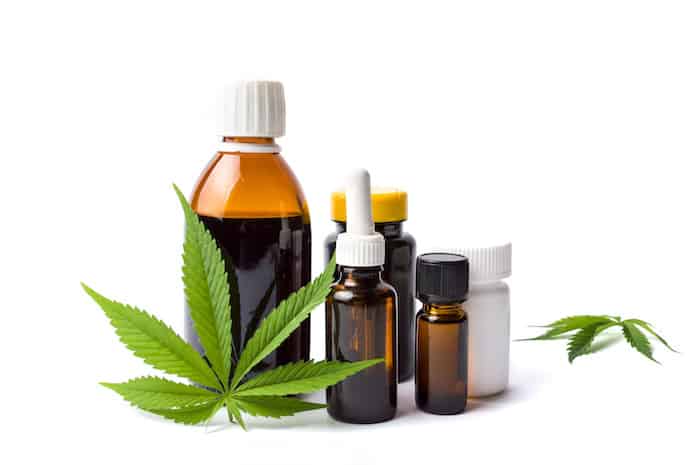The legalization of marijuana is arguably one of the hottest debates that have transcended the test of time. It hasn’t only lasted more than 20 years, but it’s also one of the few topics that bring together scientists, doctors, policymakers, citizens, and even teenagers.
Much to the relief of the debaters, there has been significant progress in the journey of legalizing marijuana. Today, 18 states and Washington Dc have legalized the recreational use of marijuana for adults over the age of 21, while 37 states have legalized medical marijuana. However, this hasn’t wrapped up questions surrounding this topic. Some policymakers are still seeking more evidence on the health benefits of marijuana while scientists are working day and night to determine if the health benefits of this substance outweigh the risks.
What is medical marijuana, and what are some of the health benefits associated with its use?
Medical Marijuana
Marijuana has more than 100 different components known as cannabinoids. However, only two main are responsible for the perceived medical properties of this substance. That’s Delta-9-tetrahydrocannabinol, popularly known as THC, and cannabidiol (CBD). Out of the two, the THC component is responsible for the high associated with marijuana. On the other hand, CBD is believed to have anti-inflammatory effects on the central nervous system, which is also believed to translate to a myriad of health benefits to the body.
Note that both components have medical properties, but your doctor must analyze the claimed benefits versus the negative impacts before approving your use. If you live in one of the 37 states, you’ll need a medical marijuana identification card to use this substance legally.
Here’re some of the claimed benefits of using medical marijuana:
1. It Helps With Pain Management
One of the most common perceived medicinal uses of marijuana is as a pain reliever. Marijuana has continuously been used to relieve chronic pain associated with age and chronic diseases such as:
- Endometriosis
- Arthritis
- Migraine
- Fibromyalgia
Since marijuana is less addictive, it’s considered a better pain manager than opiates such as codeine and morphine. As such, you don’t have to worry about your loved one ending up in a rehabilitation center due to managing pain.
Many people diagnosed with kidney complications, gastroesophageal reflux disease, or ulcers also use marijuana to manage their pain without worrying about its side effects.
However, the pain management benefits of medical marijuana are limited. You can’t use it to relieve extreme pain resulting from, for example, broken bones or surgical wounds.
2. It Helps In Cancer Treatment
Nausea and weight loss are one of the most common effects of chemotherapy. According to a past study, marijuana’s cannabinoids—dronabinol and nabilone were approved in 1985 to manage nausea in cancer patients undergoing chemotherapy.
The paper further suggests that dronabinol was approved in 1992 to manage weight loss after findings that it helps boost appetite. Therefore, it’s claimed to help cancer patients manage their weight loss and be used to manage anorexia as well. Furthermore, patients suffering from other diseases like HIV/AIDs and tuberculosis use marijuana to help them manage their weight loss.
3. Medical Marijuana Helps With Reduced Inflammation
As mentioned before, CBD found in marijuana is believed to have anti-inflammatory effects on the body and the central nervous system. Due to this element, marijuana is claimed to help in the management of the following inflammatory conditions:
- Crohn’s disease
- Rheumatoid arthritis and
- Irritable bowel syndrome

4. It Is Used To Help With Neurological Disorders And Mental Health
Marijuana has been found to affect the brain, specifically the limbic cortex. The limbic cortex is the part of the brain that determines a person’s mood, judgment, and motivation. That’s why marijuana is claimed to help with some mental disorders when taken under prescription. These disorders include:
- Multiple Sclerosis
- Parkinson’s disease
- Anxiety and Epilepsy
Specifically for epilepsy, recent developments have seen the introduction of Epidiolex, a CBD-based liquid medication for epilepsy. After several research and tests, the drug has been proved to help with two forms of childhood epilepsy. That’s Lennox-Gastaut Syndrome and Dravet Syndrome.
There’s ongoing research on how medical marijuana can help manage PTSD among veterans returning from war.
5. It Helps With Sleep Management
The THC component of marijuana has a relaxing effect that induces sleep. Your doctor, upon analysis, could prescribe marijuana to help with insomnia and other sleep disorders. Good sleep quality goes a long way towards reducing anxiety and improving your mental health.
Talk To Your Doctor
Note that the medical benefits of marijuana listed above are meant to educate you and not for self-treatment. Moreover, the effectiveness of marijuana should be critically analyzed. Therefore, if you’re considering using medical marijuana, you must first seek the counsel of a doctor who will then advise further.
Throughout the year, our writers feature fresh, in-depth, and relevant information for our audience of 40,000+ healthcare leaders and professionals. As a healthcare business publication, we cover and cherish our relationship with the entire health care industry including administrators, nurses, physicians, physical therapists, pharmacists, and more. We cover a broad spectrum from hospitals to medical offices to outpatient services to eye surgery centers to university settings. We focus on rehabilitation, nursing homes, home care, hospice as well as men’s health, women’s heath, and pediatrics.








